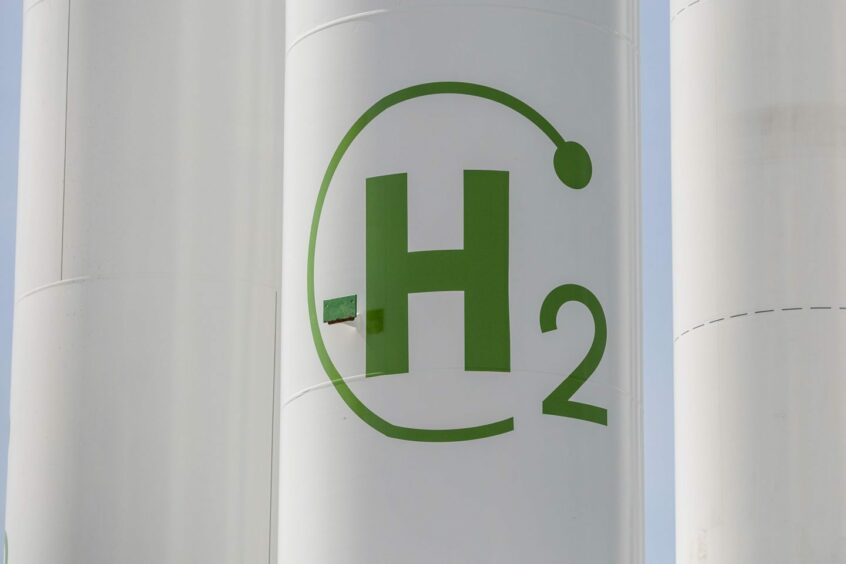 © Supplied by Lhyfe
© Supplied by Lhyfe In April 2022, the United Nations’ Climate Report declared it was ‘Now or Never’ to limit global warming to 1.5C.
We have made progress but to realise this goal we need to think bigger on energy transformation.
RSK Group Europe Renewable Energy Director Colin Brown explores the role of energy system requirements in net zero ambitions and how thinking big will offer greater opportunities.
A lot of thought is being given to how a move to renewable energy can, and will, contribute significantly to limiting global warming.
We’ve recently seen an increase in global political ambitions for large scale wind farms to be deployed, a push for more electric vehicles, airlines exploring sustainable aviation fuels, and a race to deploy green hydrogen production plants.
These initiatives are brilliant, but we also need to see these ambitions joined up with a consideration of full energy system requirements to enable these targets to be met in a timely manner.
How many gigawatts of capacity we can build by a given date is as important as how that energy is delivered to and used by consumers.
The challenge ahead is not just about decarbonising electricity production, it’s about decarbonising society across the globe and changing a culture and way of life that continues to support the global economy.
Looking back to when I started in the renewables sector, it always amazes me the distance we have come and the scale of renewable deployment we are now seeing.
We have learned a great deal about how we deal with renewable electricity generation but now is the time we need smarter consideration and forward planning around which generation technology we deploy and why.
Is it to decarbonise the electricity grid; for an international cross border energy solution; or maybe to produce electrolytic hydrogen?
Planning for this energy system matters, as upgrading infrastructure to support this new energy type, and to use the energy safely, takes a long time.
This is why we need to plan ahead and consider the energy mix design from all perspectives: how it will be transported; who the consumers are and how they will use it efficiently; and how we will store it on days when the sun isn’t shinning or the wind isn’t blowing. We also can’t halt progress for this design.
As an old boss of mine used to say: “We need to sail the ship whilst we are building it!”
There is an opportunity for us now to consider these questions. Across Europe, nations are taking the lead in growing renewable capacity at scale.
We are very lucky that the northern countries are highly suited to wind generation and the south to solar.
It is possible to harness vast amounts of energy but thought needs to also be given to how this energy will be used.
Typically, generation occurs away from where the consumer is which presents challenges in terms of storage and grid limitations.
How will the grid manage to deal with the variable generation from these weather dependent sources and how do we make up for drops in supply?
It is at this point that we need to think big.
Interconnectivity
Beyond the individual generation sites, there needs to be better connectivity so that these big sites can live up to their potential.
Europe’s grid system allows renewable energy produced anywhere within the network to be transported around the region.
It is big thinking in action but a challenge remains on capacity. This system could, however, form part of a solution should capacity planning be more considered.
Storage
When thinking about the future full energy system, another consideration is how we develop and push for replacements to traditional fuels.
Hydrogen offers a zero emission fuel source that can be transported and stored for long periods and we are seeing significant investment in growing the technology and deploying production facilities.
The progress made here is a positive step forward which will certainly support net zero ambitions.
But, can we take it further? To deploy this technology we need to remember it requires huge amounts of renewable electricity and water – these are resources already in high demand with shortages in many countries.
To realise the opportunity of electrolytic hydrogen, we need to think about the full energy system and think big.
As hydrogen technology develops, it may offer a wide range of uses. It can resolve challenges faced with storage – while batteries are an obvious means of storing renewable electricity until it is needed, they are vast and have limitations when needing to store for long periods.
If hydrogen were to be produced by using the electricity from wind turbines, it can help balance long period seasonal variations between energy supply and demand.
I believe if we want to limit climate change then we must find a way to collaborate across borders in a more effective manner – this is one of the biggest challenges we face.
International natural geographies and resources offer the solutions. This is a big task but climate change is the one issue which unites us.
Organisations like the G20 and European Union have the potential to lead the way towards significant progress in this regard.
Ensuring a global view is considered and a global plan is developed that can be promoted and deployed in the next 25 years would make a significant impact on 2050 goals.
That’s 25 years to not only deploy solutions, but to change minds towards a renewable energy system. Our success in achieving net zero is down to us all.

